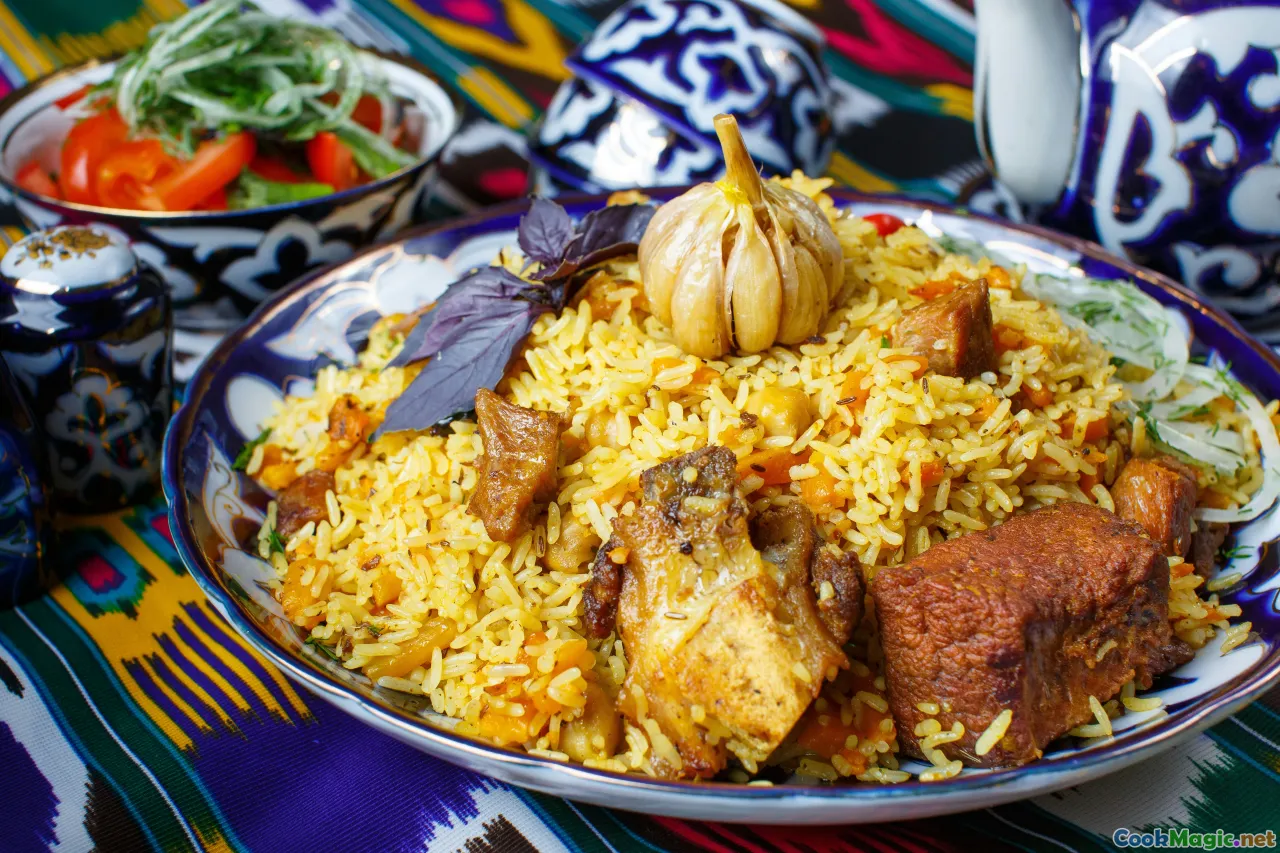Staple Rice Methods in Persian and Levantine Cuisines
11 min read Explore traditional rice preparation techniques central to Persian and Levantine cuisines, highlighting cultural significance and culinary diversity. June 25, 2025 18:05
Staple Rice Methods in Persian and Levantine Cuisines
Imagine walking through bustling bazaars where the aroma of saffron-infused rice and toasted nuts fills the air, or sitting in a sunlit courtyard smelling the fragrant steam wafting from a simmering pot. The heartbeats of Persian and Levantine kitchens often pulse around their rice—an unassuming, humble grain transformed into a canvas of culinary artistry rooted deep in history, tradition, and regional identity.
As a culinary enthusiast captivated by Middle Eastern flavors, I’ve found that the way rice is prepared in Persia and the Levant isn’t just about sustenance; it’s about storytelling, celebration, and connecting with centuries-old cultural practices. In this exploration, we’ll voyage through the methods, nuances, and stories behind these rice dishes that wield the power to evoke emotion and evoke ancestral memories.
The Cultural Significance of Rice in Persian and Levantine Traditions

Rice, in the Persian and Levantine worlds, is more than a staple food—it is woven into the fabric of their cultural identity. In Iran, Persian rice known as pilaforpolowis synonymous with festivities and hospitality, symbolizing abundance and generosity. Likewise, in Lebanon, Syria, Jordan, and Palestine, rice-bearing dishes such asMujaddara, Risotto-style Maklouba, or Kofta with rice lie at the heart of communal gatherings.
Historically, rice arrived along the Silk Road, bringing with it not just nutritional value but layers of cultural exchanges that influenced local flavors and cooking techniques. Over centuries, Persian chefs refined their rice-cooking rituals, elevating it into an art form; similarly, Levantine cooks fused local spices and grains into harmonious dishes that celebrate humble ingredients.
The Art of Perfect Persian Rice: Chelo, Polo, and Tadig

In Persian cuisine, the pursuit of perfectly fluffy yet slightly sticky rice is a revered craft. It’s not only about the flavor but also the texture, aroma, and visual appeal. The most iconic preparation is Chelo, the plain, beautifully separate grains served with kebabs or fesenjan. But the true showstopper is the creation of tadig, the crispy, golden crust at the bottom of the pot—legendary among Iranians.
The Secrets to Persian Rice: Soaking, Washing, and Steaming
First, high-quality Basmati rice is rinsed repeatedly until the water runs clear, removing excess starch that would otherwise glue the grains together. Then, it’s soaked for at least an hour—sometimes longer—to soften the grains and enhance their elongation.
Next comes steaming. A generous pinch of saffron threadssoaked in warm water breathes a warm, honeyed aroma into the rice, coloring it viscerally yellow or amber. The rice is then layered with a few drops ofdried limeorlime juice to preserve separation.
The rice is gently steamed over boiling water, with a cloth kept over the lid to trap condensation and maintain humidity—this technique yields fluffy, aromatic grains that seem to dance on the plate.
Achieving the Perfect Tadig
Tadig forms part of the signature Persian presentation, revered for its crunch and depth of flavor. To craft this, thin slices of potato, lavash bread, or pita are layered at the bottom of the pot before adding the rice, then doused with a bit of oil or butter and cooked on low heat until crisp.
The aroma of toasted bread and lightly caramelized rice is intoxicating, often enjoyed with a side of yogurtorserrano herbs. Each bite offers a crunch that elevates the entire meal, inviting families and friends to gather 'round and break bread together.
Levantine Rice Cookery: From Maklouba to Knafeh

Branching from Persia’s refined techniques, Levantine culinary practices are characterized by their hearty, seasonal, and spice-laden rice dishes. At the core are MakloubaandRisotto-style preparations, crafted with vibrant spices, herbs, and often, vegetables or meats layered in one-pot wonders.
The Classic Maklouba: An Upside-Down Feast
In traditional Levantine kitchens—from Damascus to Amman—Maklouba, meaning ‘upside-down,’ involves cooking layers of rice, spiced meat (lamb or chicken), and vegetables such as eggplant or potatoes. Once cooked, the pot is flipped over onto a serving dish, revealing a beautifully layered, dome-shaped tableau of colors.
This dish celebrates community, often prepared during celebrations and family gatherings, encapsulating warmth and hospitality in each slice. The aroma of cinnamon, cardamom, and turmeric blends with caramelized onion—a sensory symphony that beckons diners.
Levantine Flavors and Techniques
Levantine rice is often seasoned with cinnamon, allspice, cumin, and fresh herbs like parsley or cilantro, creating a fresh, vibrant contrast to the hearty grains. Toasted pine nuts and slivered almonds are sprinkled atop, adding crunch and richness.
Moreover, the method of pilaf-style cooking—where rice is sautéed briefly in oil or butter before adding broth—is widespread, resulting in a complement of fragrant, fluffy grains that absorb flavors wonderfully.
Practical Tips for Mastering Middle Eastern Rice Dishes

For those eager to infuse their pantry with authentic Persian or Levantine rice traditions, a few practical insights help bridge the gap from novice to seasoned home chef:
- Choose the right rice: Basmati is preferred for both Persian and Levantine recipes due to its long grains, aroma, and ability to stay fluffy.
- Prioritize soaking: Soaking minimizes cooking time and leads to more evenly cooked, elongated grains.
- Layer spices thoughtfully: Toast spices like cinnamon, cumin, and saffron in hot oil to awaken their aromas before adding rice or broth.
- Control heat meticulously: Low and steady heat during steaming or cooking ensures a crispy tadig and fluffy grains.
- Experiment with textures: Incorporate nuts, dried fruits, or herbs for added layers of flavor and texture.
Personal Stories and Dishes That Illuminate Tradition
In my experience, nothing rivals the savory aroma of a Persian pollo simmering with saffron and rosewater, or the layered decadence of Levantine Maklouba bubbling in the clay pot. These dishes evoke nostalgia in those who grew up with them and inspire newcomers to appreciate the craftsmanship behind each spoonful.
During a trip to Shiraz, I witnessed a family gather around the rice pot, deftly creating the crispy tadig—each family member offering a pinch of patience and love. Similarly, in a Damascus kitchen, the layered Maklouba slowly cooked over an open flame radiated warmth and tradition, filling the alley with a complex symphony of spice and emotion.
Celebrating the Heritage, One Grain at a Time
The soul of Persian and Levantine cuisines is found in the care, tradition, and artistry poured into their rice methods. Whether it’s the delicate separation of grains, the intoxicating aroma of saffron, or the layered tapestry of ingredients, rice becomes a vessel that carries stories across generations.
As global palates evolve and the world embraces Middle Eastern cuisines, mastering these rice techniques offers a gateway not only to delicious dishes but to an intricate world of history and human connection—through the humble yet profound grain.
May your next rice dish carry the soul of Persia or the Levant, resonating with the centuries of tradition and passion that have crafted these cherished culinary staples.









